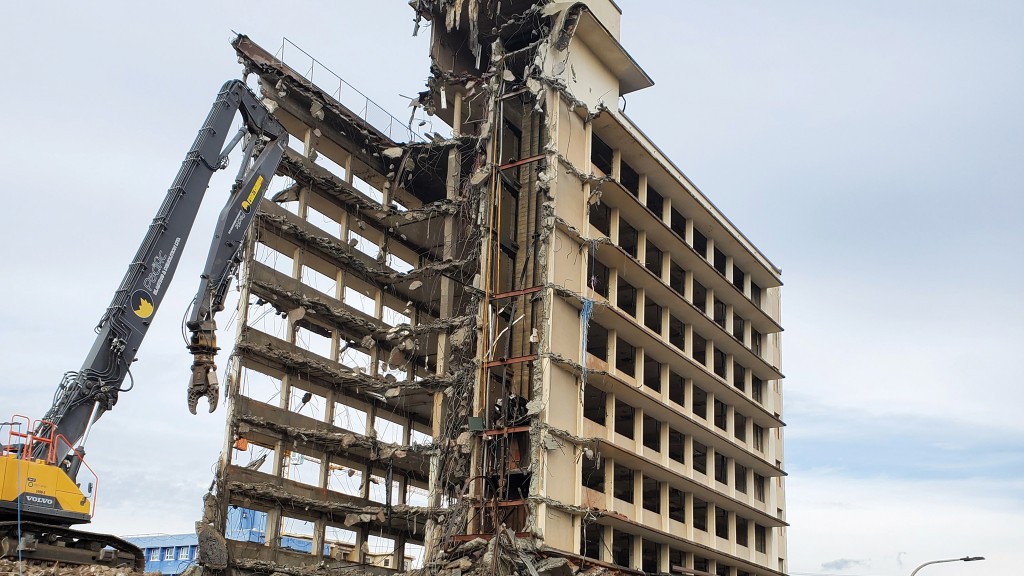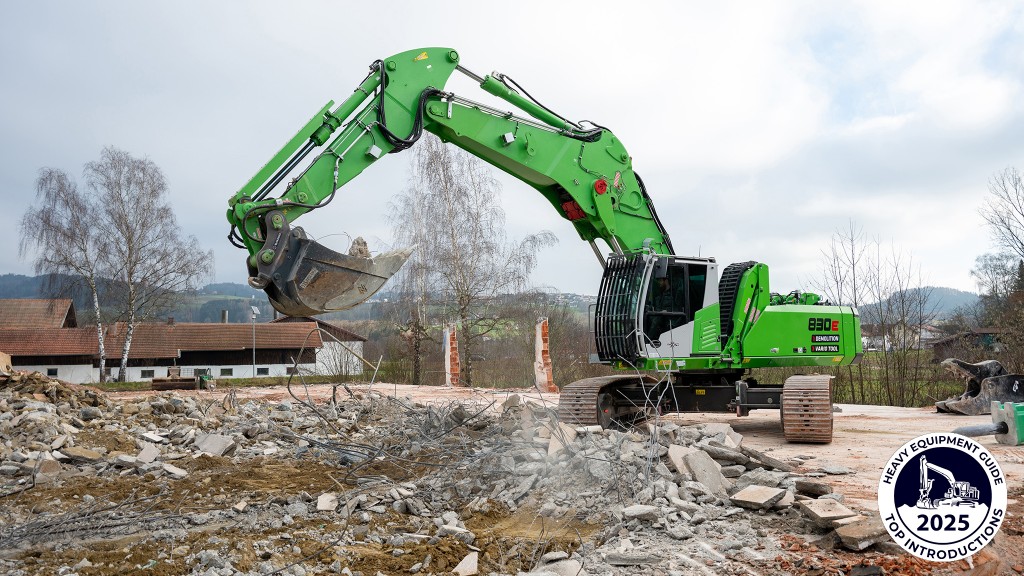High-reach demolition from the operator’s seat
Experienced operator Kevin Romphf talks about the skills and knowledge that help make big demo jobs easier

Building demolition is one of those activities that draws a crowd - especially when it's a big building. Watching heavy equipment of various kinds plow through a structure, reducing it to components that are hauled away for disposal or recycling, can be fascinating.
For the operators who are handling that equipment, demolition work is more of a science - every move needs to be done with care and consideration for the structure, the job site and the public spaces around them.
Good demolition comes from time and experience
Learning the tricks of the trade takes time and experience, and not every job is filled with big drops but, according to one operator, demolition work is always engaging and fulfilling.
Kevin Romphf has worked for a number of demolition companies on jobs across Canada, and specializes in big jobs that require high-reach excavator work. He didn't start on those jobs, however. In fact, he began his career indoors on environmental and remediation aspects of demolition.
"I started at the top and worked my way down to it, I guess you could say," Romphf described. "I did abatement, then a bunch of interior work - running a company, estimating, doing all that stuff. I would run equipment like Bobcats and small excavators, but didn't get into it full time until around 2000."
A few years working in a scrapyard with equipment mounted with shears led to an opportunity that brought Romphf back into building demolition, and the chance to begin work on a high-reach machine.
"A lot of construction jobs are repetitive, but this - every day is a new challenge. Every day is different. You go to work expecting one thing, but no, every building is different. It might be identical to another, but it's still built differently. The guy building the concrete had a bad day, or someone putting the steel together forgot a bolt. Silly things can change everything we do when we're demoing a building," he related. "It's always changing. Every time you touch something, some other part can change. You go ‘okay, we can't do that - we have to change the whole approach.'"
Step up on machine sizes to get better
Learning the demolition game from the seat of a machine took time and effort, and Romphf feels that is important in understanding how best to approach demolition jobs of all sizes. He started out on small machines, demonstrating that he could plan his work and be efficient, then moved up to a mini excavator and repeated that process. From there it was up to mid-sized excavators, cleaning up behind the demo machines, and on to a larger excavator next to experienced operators where he could watch and understand the most efficient and safest approach to completing the job cleanly and efficiently.
Once an operator understands the demo process, then they can move on to actual demolition work, starting with smaller buildings and working their way up. In the process, they need to learn a lot about construction and engineering, because without knowing how buildings are built it's difficult to take them down, he said.
"The biggest thing about running a high-reach is learning what you can get away with, what you can't get away with, and all that. I've spent a lot of time with engineers in doing high-reach jobs, learning from them," Romphf said.
Knowledge of building design aids in good demo work
Recognizing the ways in which structures are designed, how to identify the strong points and not accidentally cause things to fall before the operator is ready - all of these are skills that a successful high-reach operator needs to understand before they get onto a demolition site, Romphf said.
"You can't just take the columns out of six or seven stories and expect a good result. You have to target part of the building and be confident that the other parts are going to stay there," he said. "Plus, when you're munching close to a road. . . you need to learn how to pull material in so it doesn't fall onto the streets."
Many people have seen videos of the big drops - buildings collapsing down impressively - but, while they're certainly exciting, those drops can be potentially dangerous and difficult to clean up. There has to be a method to the operation.
"I just did a nine-story hospital. If you're facing it and some people are suggesting knocking six or seven stories down at a time. . . if I do it that way I'm creating a huge mess that I have to deal with once I've dropped it," Romphf said. "If I go one or two floors at a time, I can control those two floors, pull the columns out, take the next two floors, pull those columns, until you get to the bottom and then drop the big slabs all the way to the bottom. You do it the other way, you have four or five columns that are still hanging there and could come at you."
Cramped quarters a natural challenge in urban areas
Learning to work in cramped quarters is also a big part of high-reach work, especially in urban environments. Romphf worked on a hotel project in Vancouver's bustling downtown that was a challenge due to the space. Demolition robots were used to bring the building down to the final few floors, then the high-reach went to work - stuck in an alleyway next to the building.
"When I started part of that building, I was stuck in the alley, basically side swinging against the building, trying to munch it. I'd have to munch at an angle, slip over to the other side, munch at another angle, and then keep going until I could actually face the building straight on," he related. "The machine's so big that you don't always have enough room."
Demolition isn't always about high-reach work, of course and Romphf spends plenty of time working on smaller buildings and in standard excavators between the big jobs. Those have kept him moving, though - he's worked in various places across Canada, thanks to his expertise on high-reach machines.
"Think about it this way - that piece of equipment is between $1.5 and $2 million. If you're just throwing someone in it that knows how to run a machine, the potential there to hurt themselves or damage that piece of equipment is pretty high," he noted. "The number of people who are good with them isn't that high - a lot of people are slower on them because of the height. You want to be patient and slow, and guys that have run them for a while are used to the heights and can manipulate things better."
Finesse and knowledge aid in improvement
At those heights, and with the limitations to power and capacity that high-reach work brings along with it, finesse and knowledge are important. It takes time to learn, and Romphf said operators who want to learn need to keep that in mind as they work on smaller buildings first.
"Learn your structures, and learn on smaller buildings. If you can go into a building with a 40-ton machine and do three or four stories with no problems, then you can start looking up," he said. "But, start with something like a three-story building on a high-reach, instead of ten stories. . . you can learn well at that height and gradually go up."
Romphf advised learning on buildings that are relatively open, and for operators to concentrate on keeping materials inside the structure as they demo. That way when the job moves to more complex buildings close to city streets, the operator already knows how to handle it.
"That way it doesn't feel like a challenge - it just feels routine," he said. "We deal a lot with the public, and you have to learn keeping everything on the inside. If you're going for a big drop and it goes sideways and things wind up on the street corner, they'll have big issues. That's why I'd rather take smaller bites and control it - I try not to have that problem. That's the big challenge."


